Howdy, Howdy! 


INTRODUCTION
The topic we (Angela Price, Issac Scoggins, and Michael Scott) selectively focused in on involves the interdisciplinary teaching of history and literature. Too often, we treat both history and literature as if these subjects reside in a vacuum. In reality, both subjects are intertwined and should be taught as such. The topic area we chose to focus in on is the interdisciplinary approach to teaching literature with history. For one unit, we focused on the times and works of African authors, since African history and literature tends to be under represented in the high school literary canon. We began with the Nigerian author Chinua Achebe. In order to facilitate teaching Achebe's works, students have to know the times and environment his writings were set in. The roles of British imperialism, the fall of the British Empire, and the subsequent autonomy of her colonies has to be taught from a historical perspective in order to comprehend the literary perspective.
By creating a website that all three of us participating teachers can access along with our students (most of whom we have in common), we crafted a collaborative approach to teaching both history and literature, subjects which ought to be taught in conjunction in the first place.
STYLEBOOK
This is site is dedicated to Dr. John Horn High School English and social studies classes. Keep this page in your list of favorite places because the information being periodically updated here is designed to help you pass your classes!
MLA formatting
All high school research papers will conform with Modern Language Association (MLA) formatting. To review, click on this hyper link:
https://owl.english.purdue.edu/owl/section/2/11/
APA formatting
All college-level work to include dual-credit classes with conform with American Psychological Association (APA) formatting. To review, click on this hyper link:
https://owl.english.purdue.edu/owl/resource/560/01/
Blackout poetry ![]()
Blackout poetry provides a creative opportunity for students to give new meaning to old work. Using previously published text, students select anchor words to create their own poems. Then the students illustrate what they want and "blackout" the rest. Check out the directions and examples here:
https://www.scholastic.com/teachers/blog-posts/john-depasquale/blackout-poetry/
images from Google images




Performance Assignment: After reading the directions listed in the hyperlink above and viewing the samples above, create and illustrate your own blackout poem.
Do, does, did, done
The Verb - To Do
The verb TO DO has four forms.
-
Present Tense: Do / Does
-
Past Tense: Did
-
Past Participle: Done
TO DO - Present Tense - (Do / Does)
The present tense of TO DO is:
I / you / we / they - DO
he / she / it - DOES
TO DO - Past Tense - (Did)
The past tense of DO is DID for all subjects:
I / you / we / they / he / she / it - DID
TO DO - Past Participle - (Done)
The past participle of DO is DONE. Remember that past participles are accompanied by TO HAVE or TO BE (in the correct tense).
5-7-5 the Haiku
The haiku is a three sentence poem that gains its stucture from the number of syllables in each line. Normally, the first line is five syllables in length. The second line is seven syllables in length, and the last line returns to five syllables in length. Originally developed in Japan, the haiku usually deals with a seasonal or nature theme. To learn more about how to write a haiku, click here:
http://www.creative-writing-now.com/how-to-write-a-haiku.html
It is important to note that the original Japanese haiku was measured in sounds, or "breaths," not English syllables. The 5-7-5 approach was a rough approximation. Many traditional Japanese and English-language literay haiku are much shorter than the 5-7-5 format of the West. That said, poetry is art and 5-7-5 is still very popular today. Some Japanese poets still embrace that framework.
Here are some famous haiku examples:
Blowing from the west
Fallen leaves gather
In the east.
- Yosa Buson
An old silent pond...
A frog jumps into the pond,
splash! Silence again.
- Matsuo Bashō
I kill an ant
and realize my three children
have been watching.
- Kato Shuson
Some Characteristics of Haiku
- An English-language haiku sometimes contains of 17 total syllables
- English-language format is sometimes composed of 3 lines of 5-7-5 (syllables)
- 2 simple subjects are often placed in juxtaposition
- These 2 subjects are often separated by punctuation
- A keen or unusual observation is made by comparing the two subjects
- Haiku often contains a seasonal reference
- Poems are traditionally about nature or the natural world
ASSIGNMENT: Write three of your own haikus using the characterstics listed above.
Shakespeare vs Hip Hop ![]()
Poetry is alive and well today. Check out the Ted Talk link below and see The parallels between the works of William Shakespeare and the world of Hip Hop lyrics:
“Our language is funny – a ‘fat chance’ and a ‘slim chance’ are the same thing.”
J. Gustav White
May 2 SAT/ACT vocabulary prep words
- Acquiesce -v-To comply; submit.
- Writhe -v-To twist the body, face, or limbs or as in pain or distress.
- Ubiquitous -adj- Being present everywhere.
- Taciturn -adj- Disinclined to conversation.
- Frivolous -adj- Trivial.
That vs. Which
'That' is used as part of a clause that is restrictive, meaning that the clause is essential to the sentence and without it the meaning of the rest of the sentence would be different. 'Which' is used as part of a clause that may add extra information or a shade of meaning, but is not required in the same way.
Exercise
A while versus awhile
Awhile versus a while bellringer
• Awhile (adverb) - for a while; for a short time
The guests planned to stay awhile.
• A while (noun) - for a short time; when while is used as the object of the preposition (for a while) then the "a" is separated from the "while"
The guests planned to stay for a while.
Choose either awhile or a while to fill in the blank.
1. The dinosaur eyed his prey for __________________.
2. The dinosaur hid ____________________ and eyed his prey.
3. It had been _________________ until the dinosaur made his attack.
4. Henry and Jane talked ____________________.
5. We watched the show for a ___________________.
REVIEW: ‘New’ Imperialism 1800-1914 lecture notes
A Look Back
-
Imperialism has two meanings. One describes its action and the other describes its attitude. The clearest meaning of imperialism is building of empires. The extension of an empire through force to dominate other nation and peoples through political, economic, and social means.
The ‘New’ Imperialism
-
‘New’ Imperialism is a term used to describe a period of expansion by European powers, the United States, and the Empire of Japan.
-
The fever of expansion of these Western Powers (and Japan) are responsible for the “carving up of Africa and Asia” –A term that describes the total domination of Africa and Asia because of ‘New’ Imperialism.
-
Recall the first wave of European Imperialism occurred between the 15th and 19th Centuries. This beginning wave colonized the Americas and established outposts in Africa and Asia.
Rise of ‘New’ Imperialism
-
The end of the ‘First’ era of European Imperialism began after the American Revolution and the fall of the Spanish Empire in Latin America.
-
The economic implications for Great Britain began to show the deficiencies of mercantilism (the economic theory that trade generates wealth and is stimulated by the accumulation of profitable balances).
-
After the 1815 Congress of Vienna and the defeat of Napoleonic France in 1871, Great Britain gained the benefits of being the world’s sole modern, industrial power.
-
-
-
“Workshop of the World”
-
-
Berlin Conference
-
The Berlin Conference of 1884-1885 sought to destroy the competition between the European Powers.
-
The Berlin Conference defined “effective occupation,” which legitimized the international recognition of a territory claim, specifically in Africa.
-
Direct Rule in terms of “effective occupation” gave European powers the “right” to use armed forces against indigenous (local) states and peoples.
-
Uprisings against imperials rule were put down ruthlessly
-
-
-
Herero Wars 1904-1907
-
Maji Maji Rebellion 1905-1907
-
-
-
The Berlin Conference also remapped Africa (Territorial Claims) without cultural/linguistic boarders that were already established.
-
At the end of the Conference, Africa was divided up into 50 different colonies.
Social Implications
-
The drive of ‘New’ Imperialism also ushered in new ideas and views of colonialism.
-
-
-
Rudyard Kipling Take up the White Man’s Burden
-
-
-
During this time, Social Darwinism (theory that individuals, groups and peoples are subject to the same Darwinian laws of natural selection) became popular throughout the Western world.
-
-
-
The French and Portuguese saw Imperialism as “civilizing mission”
-
-
-
One of the biggest motivations behind the ‘New ‘Imperialism was the idea of humanitarianism
-
-
Religious motives through humanitarianism evolved out of this as well. Christian missionaries attempt to save the souls of “uncivilized” people.
-
Superior in Morality
-
-
-
European elites also found advantages in Imperialism as well, through Capitalism.
-
-
-
Large overseas expansion created more markets for goods and services. Investment in these ventures created more wealth for these companies and those that are associated with those companies.
-
Example: East India Company
-
-
-
-
The Rise of Trade Unionism, Socialism, and other protest movements during the “Era of Mass Society,” these elites also used Imperialism to their advantage.
-
-
-
Jingoism- Extreme patriotism, especially in the form of aggressive or warlike foreign policy
-
Spanish-American War 1898
-
Second Boer War 1899-1902
-
Boxer Rebellion 1900
-
-
-
Social Imperialism
-
As a political term, social imperialism is a political ideology of people, parties, or nations that are “Socialist in words, imperialist in deeds.”
-
-
-
Marxist expression, typically used in a insulting manner
-
Example: Mao Zedong argued that the Soviet Union had become an imperialist power while maintaining a socialist disguise.
-
-
-
Hans-Ulrich Wehler defined Social Imperialism as a “defensive ideology” to counter “disruptive effects of industrialization on the social and economic structure of Germany.”
-
-
-
Essentially, this gave the German government an opportunity to use Social Imperialism to distract public attention from domestic problems
-
-
-
To Wehler, German colonial policy in the 1880s was the first example of Social Imperialism in action.
-
-
-
1897 the Tirpitz Plan expanded the German Navy for colonial expansion
-
-
Voices of the Colonized
India
-
In the 17th Century, British businessmen arrived at India. Taking a small portion of land, the East India Company was created.
-
-
The British East India Company annexed most of the country of India, starting with Bengal in 1757 and ending with Punjab in 1849
-
The British enabled for India to experience technological improvements. Indian cities began to be connected by railways and telegraph systems enabled communication to be sent faster.
-
-
-
Overtime, some Hindu and Muslim Sepoys rebelled in 1857, resulting in the Indian Mutiny.
-
-
After the mutiny, all of India came into direct control of the crown.
-
-
China
-
In 1839, China found itself fighting the First Opium War with Great Britain.
-
-
Opium had been banned in China which cut into the profits of British Capitalists
-
China was defeated and in 1842 agreed to the Treaty of Nanking.
-
Hong Kong was given to Great Britain and other ports were opened to British trade and residence.
-
-
-
-
In 1856, the Second Opium War broke out which resulted in Chinese defeat
-
-
In 1858 the Treaty of Tientsin and the 1860 Convention of Peking opened new ports to trade and allowed foreigners to travel to the Chinese interior.
-
Missionaries gained the right to spread Christianity
-
-
Africa
-
Britain’s formal occupation of Egypt in 1882 was triggered by the concern over the Suez Canal.
-
-
Conquest of the Sudan in 1896-1898, which turned into a confrontation with a French military expedition at Fashoda in September 1898
-
In 1899, Great Britain began its takeover of South Africa
-
-
The End of ‘New’ Imperialism
-
The onset of World War I, which many historians point to a mixture of national pride and competition within the imperial process soon began the first stage of failure of European imperialism.
-
After World War I, Germany was reprimanded. As a condition of their surrender and the end of the war, Germany gave up all of its claims in Africa.
-
However, it was the beginning of World War II that would begin the whisperings of decolonization.
-
After World War II, the plan for European powers to decolonize began. Though it would take until the 1990s for the final European colonial acquisition to be handed for self-government.
Read Chinua Achebe's biography commencing on page 1453 of your text. Then read Civil Peace (pages 1454-1458).
Performance Assignment Chinua Achebe
Civil Peace
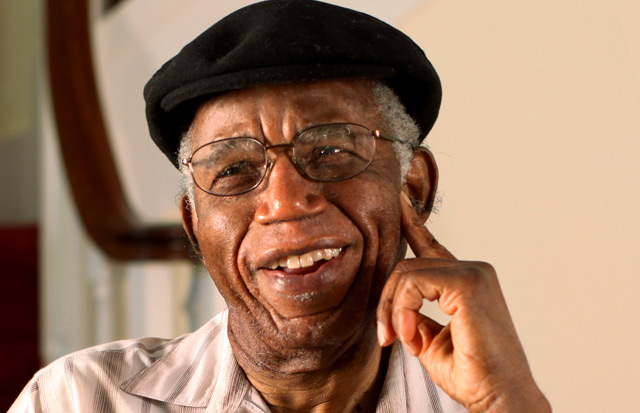
The Nigerian author Chinua Achebe introduces the character Jonathan in his short story "Civil Peace." The story is set in post civil war Nigeria and describes the hardships Jonathan and his family endured as well as the work ethic and optimism needed to overcome life's obstacles. The Nigerian Civil War, also known as the Biafran War, is relatively unknown to most Americans. Since it occurred during the same time as America's involvement in the Vietnam Conflict, the Biafran War did not get the same media attention. As such, a war where 1-2 million people died is at risk of being lost in our history studies.
Before reading "Civil Peace," please view the following short videos. Pay attention to the conditions you see and who is involved in the conflict.
https://mail.google.com/mail/u/0/?tab=wm#inbox/15b892ed1e977340?projector=1
https://www.youtube.com/watch?v=HOm141bVwvE&feature=youtu.be
After watching the two videos, choose two of the three quotes, and then introduce, quote, properly cite, and explain the two quotes you chose. Feel free to use your notes.
-
“It was like Christmas for him and for many others like him when the payments began. They called it (since few could manage its proper official name) egg-rasher.” Chinua Achebe, Page 1455
-
“No Civil War again. This time na Civil Peace. No be so?” – Bandit leader, Page 1457
-
“I say, let egg-rasher perish in the flames! Let it go where everything else has gone. Nothing puzzles God.” Jonathan, Page 1458
Then, in your journal, explain the significance of one of these quotes to the Achebe story. Be prepared to share your thoughts with the class.
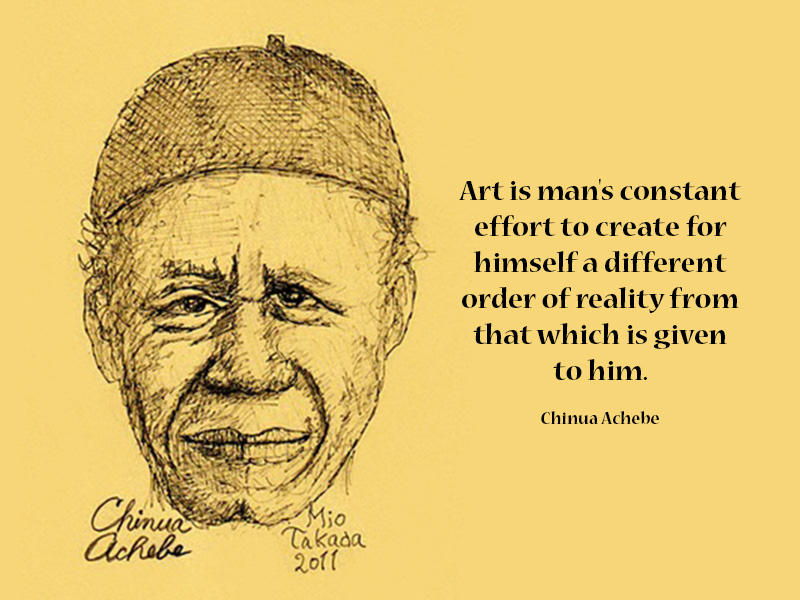
Use this quote by Chinua Achebe as a writing prompt in your journal. Think and go...
Things Fall Apart by Chinua Achebe

“A thematic approach to close reading First published in 1958, Chinua Achebe’s Things Fall Apart is easily the most recognizable and widely taught African novel in the U.S. It has been translated into at least 50 languages, and sold over 10 million copies worldwide, and has appeared on many “greatest books of all times” lists around the world. But why? What is it about this classic story of transformation and tragedy that makes this book so attractive to students and educators? In some ways, the book has come to represent Africa as a continent: it serves as a symbol of the injustices of colonization and the internal forces that helped lead to the complete take‐over of Nigeria by the British colonialists. But is has also become a symbol of postcolonial possibility, and the important task the African writer takes up when attempting to reclaim or rewrite the stories of his or her people. Because of this, educators have a double burden in teaching this highly teachable book: they must both fully contextualize the novel in its own time and place, and they must keep central to their approach to the text a constant reminder that while we can learn much about the truths of the colonial experience through this text, it is a work of fiction, not a historical or anthropological tool for understanding contemporary Africa in all its complexity and diversity. To do this, we suggest that the book be taught from a thematic framework which relies on the close reading of key passages, emphasizing the relationship between the form and content of the novel and helping students navigate the development of key characters and themes to negotiate how they create meaning in a...classroom. When taught from this perspective, the book opens up worlds of opportunities for students to connect to the text, appreciate its great literary merit, and gain a greater understanding of the themes and issues developed in its pages (http://humanities.wisc.edu/assets/misc/Things_Fall_Apart_Teachers_Guide_PRINT_VERSION.pdf.)”
Innovative Teaching Idea: Diary Entries
Things Fall Apart is a novel that will stay with the reader for a long time. What better way for the student to be gifted with this incredible story, than to let them insert themselves into the time period and the story. Students will create a narrative diary that will accompany them throughout the unit. Students will take on a character from Igbo culture and write and answer questions from that character's perspective. The character chosen can either be one that already exists in the story or one that the student creates for themselves. At the end of the unit, students will present their character to the class. It should be noted that although some students will choose to use the same perspective character as another student, all of the voices will be unique.
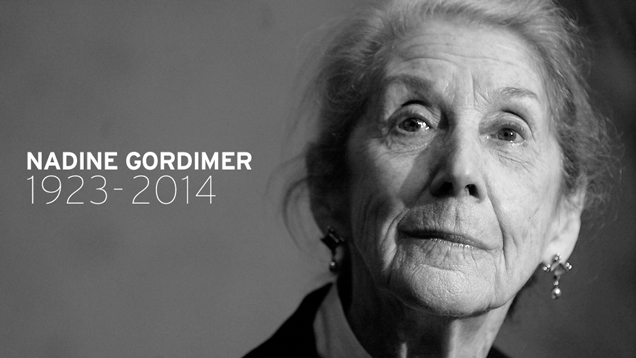
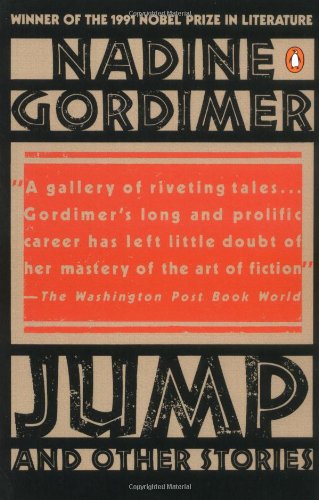
Nadine Gordimer
Nadine Gordimer is a Nobel-prizing South African author whose works include novels, short stories, and essays. During the 1960s and 1970s she wrote a number of novels set against the backdrop of the emerging resistance movement against apartheid, while the liberated South Africa provides the backdrop for her later works, written in the 1990s. The stories of individuals are always at the center of her narratives, in relation to external limitations and frameworks. As a whole, Nadine Gordimer's literary works create rich imagery of South Africa's historical development. Her book Jump and Other Stories is a collection of short stories that profoundly illustrates the turbulence of South African history and the richness of her culture. The book makes a strong companion piece to Achebe's Things Fall Apart for the non-Western history and literature student. Like Achebe, Gordimer casts a critical eye at the consequences of colonialism and the effects of political repression.
To review Gordimer's Nobel prize biography, click the hyperlink below:
https://www.nobelprize.org/nobel_prizes/literature/laureates/1991/gordimer-facts.html
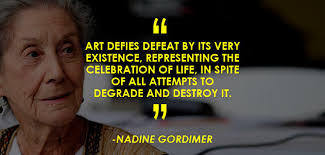
Use the above Nadine Gordimer quote as your journal writing prompt. What does Gordimer mean by this quote? How is it applicable to her descriptions of apartheid in South Africa?
African poetry resources
http://www.okayafrica.com/culture-2/literature/women-poets-african-summer/
https://allpoetry.com/Dennis-Vincent-Brutus#
Nelson Mandela - http://www.history.com/topics/nelson-mandela
What was apartheid?
Translated from the Afrikaans meaning 'apartness', apartheid was the ideology supported by the National Party (NP) government and was introduced in South Africa in 1948. Apartheid called for the separate development of the different racial groups in South Africa. On paper it appeared to call for equal development and freedom of cultural expression, but the way it was implemented made this impossible. Apartheid made laws forced the different racial groups to live separately and develop separately, and grossly unequally too. It tried to stop all inter-marriage and social integration between racial groups. During apartheid, to have a friendship with someone of a different race generally brought suspicion upon you, or worse. More than this, apartheid was a social system which severely disadvantaged the majority of the population, simply because they did not share the skin colour of the rulers. Many were kept just above destitution because they were 'non-white'.
In basic principles, apartheid did not differ that much from the policy of segregation of the South African governments existing before the Afrikaner Nationalist Party came to power in 1948. The main difference is that apartheid made segregation part of the law. Apartheid cruelly and forcibly separated people, and had a fearsome state apparatus to punish those who disagreed. Another reason why apartheid was seen as much worse than segregation, was that apartheid was introduced in a period when other countries were moving away from racist policies. Before World War Two the Western world was not as critical of racial discrimination, and Africa was colonized in this period. The Second World War highlighted the problems of racism, making the world turn away from such policies and encouraging demands for decolonization. It was during this period that South Africa introduced the more rigid racial policy of apartheid.
People often wonder why such a policy was introduced and why it had so much support. Various reasons can be given for apartheid, although they are all closely linked. The main reasons lie in ideas of racial superiority and fear. Across the world, racism is influenced by the idea that one race must be superior to another. Such ideas are found in all population groups. The other main reason for apartheid was fear, as in South Africa the white people are in the minority, and many were worried they would lose their jobs, culture and language. This is obviously not a justification for apartheid, but explains how people were thinking.
Apartheid Laws
Numerous laws were passed in the creation of the apartheid state. Here are a few of the pillars on which it rested:
Population Registration Act, 1950This Act demanded that people be registered according to their racial group. This meant that the Department of Home affairs would have a record of people according to whether they were white, coloured, black, Indian or Asian. People would then be treated differently according to their population group, and so this law formed the basis of apartheid. It was however not always that easy to decide what racial group a person was part of, and this caused some problems.
Group Areas Act, 1950This was the act that started physical separation between races, especially in urban areas. The act also called for the removal of some groups of people into areas set aside for their racial group.
Promotion of Bantu Self-Government Act, 1959This Act said that different racial groups had to live in different areas. Only a small percentage of South Africa was left for black people (who comprised the vast majority) to form their 'homelands'. This Act also got rid of 'black spots' inside white areas, by moving all black people out of the city. Well known removals were those in District 6, Sophiatown and Lady Selborne. These black people were then placed in townships outside of the town. They could not own property here, only rent it, as the land could only be white owned. This Act caused much hardship and resentment. People lost their homes, were moved off land they had owned for many years and were moved to undeveloped areas far away from their place of work.
Some other important laws were the:
Prohibition of Mixed Marriages Act, 1949
Immorality Amendment Act, 1950
Separate Representation of Voters Act, 1951
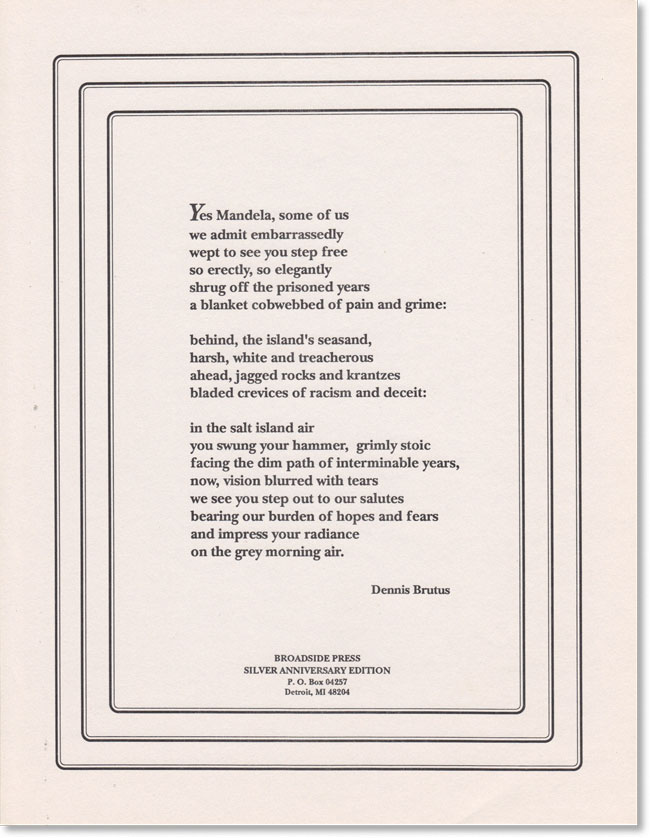
by Dennis Brutus
Journal Assignment - In Brutus' poem above, why do some people weep? What is the poem about?
More books and plays!
Selected Authors working on Apartheid-Related Themes
Summaries and Themes
Authors express their thoughts about the apartheid in different ways through various forms of literature. Sometimes the word “apartheid” is never even used in a piece of writing but it is still a prominent issue. Listed below are summaries of well-known books that discuss the topic of apartheid, which are divided by theme.
Prisoners, Exiles, Refugees
Breyten Breytenbach’s The True Confessions of an Albino Terrorist (1983)
Breytenbach relates the seven years spent in a South African prison on charges of terrorist acts against the state (www.unhcr-50.org).
In Memory of Snow and Dust (1989)
Breytenbach pieces together the lives of three exiles living in Paris (www.unhcr-50.org).
Bessie Head‘s When the Rain Clouds Gather (1968)
The poverty-stricken village of Golema Mmidi, in the heart of rural Botswana, offers a haven to the exiles gathered there. Makhaya, a political refugee from South Africa, becomes involved with an English agricultural expert and the villagers as they struggle to upgrade their traditional farming methods with modern techniques. The pressures of tradition, the opposition of the local chief, and, above all, the harsh climate threaten to bring tragedy to the community, but strangely, there remains a hope for the future (web.uflib.ufl.edu/cm/africana/head.htm).
Conflict between Races
Alex La Guma’s In the Fog of the Season’s End (1972)
In his most autobiographical novel, La Guma describes the South African struggles through characters who are involved in political resistance, unlike the lonely victims of his earlier works. Although the main character, Beukes, has reached the conclusion that collective action is essential to solving the problems of South Africa’s system, the author uses flashbacks to reveal the squalor and despair, which are the source of the political movement. The characters overcome the isolation and disconnectedness which plague the subjects in his earlier works in order to work together towards their goal (web.uflib.ufl.edu/cm/africana/laguma.htm).
Alan Paton’s Cry, The Beloved Country (1948)
Paton began writing this, his first and his best-known novel, in 1946in Trondheim, Norway, and finished the book in San Francisco on Christmas Eve, the same year. It depicted the collective guilt and friendship over racial prejudices in the story of a black South African. Stephen Kumalo, an aging Zulu minister, travels from his tribal village to Johannesburg, where he finds that his only son, Absalom, has murdered the only son of a white man, James Jarvis. The tragedy connects these two men, and later they begin to work together (www.kirjasto.sci.fi).
Women
Farida Karodia’s Other Secrets (2000)
A sensitively written novel that explores the complex relationships between mother and daughter and the peripheral role of a principled, hard-working father whose only fault is his futile optimism. Sisters Yasmin and Meena and their family are among those helpless to control their destinies in the arid years of apartheid, but not entirely without hope. Yasmin’s strivings bring her some of what she wants in life, but not without tragedy(www.suntimes.co.za).
Olive Schreiner‘s The Story of an African Farm (1883)
The novel’s heroine, the fiercely independent Lyndall, is often regarded as the first example of that much-feared and much-jeered literary phenomenon- the “New Woman”. It strikes, very forcefully indeed, the first deathblow at the institution of marriage. Lyndall’s frustration at the limited opportunities available to women, her bitterness at blatant gender discrimination, her refusal to commit herself to the iron contract of marriage, all find echoes in most of the other “New Women” of the 1880s and the 1890s – not least in Hardy’s Sue Bridehead. Lyndall’s disillusionment begins quite early. Driven by an insatiable hunger for knowledge, Lyndall leaves her stagnant farm life and enters a boarding school through her own sheer determination. But her experience at the boarding school, instead of opening up wider vistas of knowledge before her, only reveals how hopelessly confined is a woman’s lot. (www.yale.edu).
White Perspective (Life paralleling apartheid)
Nadine Gordimer’s The Conservationist (1974)
The Conservationist, which won the Booker Prize for 1974, evokes the sterility of the white community. Mehring, the Afrikaner antihero whose farm is as barren as his life, conserves both nature and the apartheid system, the one to keep the other at bay. He likes to preserve nature’s variety but is in fact its exploiter; nor does nature return his sentimental love. In his moral vacuum, Mehring sees Africa returning to the possession of the blacks. Mehring is not a male chauvinist Boer; he is tolerant but no liberal, a financier using his farm as a tax-deductible expense. His leftist mistress travels round the world on his money. He likes to be seen as a country gentleman, but sexually he is a colonialist as we see when he picks up a coloured girl and takes her to an old mine property, only to be surprised by the mine guards. The corpse of an unknown African is found on the farm, silently disputing Mehring’s claim to his own clean soil. He identifies with the nameless black man under the reeds, burying him in a coffin. Yet, the corpse haunting Mehring and his house (a symbol of South Africa) is the claim on Africa by those who possess no land at all. (www.nobel.se).
J. M. Coetzee‘s Disgrace (1999)
David Lurie is hardly the hero of his own life, or anyone else’s. At 52, the protagonist of Disgrace is at the end of his professional and romantic game, and seems to be deliberately courting disaster. Long a professor of modern languages at Cape Town University College, he has recently been relegated to adjunct professor of communications at the same institution, now pointedly renamed Cape Technical University: Twice married and twice divorced, his magnetic looks on the wane, David rather cruelly seduces one of his students, and his conduct unbecoming is soon uncovered. Refusing to play the public-repentance game, David gets himself fired – a final gesture of contempt. Now, he thinks, he will write something on Byron’s last years. Not empty, unread criticism, “prose measured by the yard,” but a libretto. To do so, he heads for the Eastern Cape and his daughter’s farm. In her mid-20s, Lucy has turned her back on city sophistications: with five hectares, she makes her living by growing flowers and produce and boarding dogs. Just as David has settled into his temporary role as farm worker and unenthusiastic animal-shelter volunteer, he and Lucy are attacked by three black men. Unable to protect his daughter, David’s disgrace is complete. Hers, however, is far worse (www.amazon.com).
Romance
Andre Brink’a The Rights of Desire (2000)
Ruben Olivier: He’s 65, a widower with mild memories, a former librarian and inveterate reader. Olivier lives in post-apartheid South Africa, amidst the bitter recriminations and confused violence outside the very doorstep of his Cape Town manse. Olivier’s life, both public and private, is a study in shelter. Olivier’s sons, worried for their father’s safety after the random murder of his best pal and chess-opponent, are committed to spiriting him out of South Africa, but Olivier won’t submit. After all, he argues, he has Magrieta, his petulant black housekeeper, to look after him, and also Antje of Bengal, the ghost of a 17th century slave executed for the poisoning of her master and lover’s wife. To appease his children, nonetheless, Olivier agrees to take in a lodger. Enter Tessa Butler: 29, caustic and carnal. From their first conversation Olivier is in love: madly, deeply, as if all the illusions and allusions in his books had shuddered to life in one blinding instant. (www.salon.com)
Murder
Rian Malan’s My Traitor’s Heart (1990)
The first part of the book is the personal confession of a liberal young Afrikaner and the second, which takes up well over half the book, has the ironic title, ‘Tales of Ordinary Murder’. The third part, ‘A Root in Arid Ground’, tells the story of Neil Alcock and his wife Creina and of their experimental settlement at Mdukatshani across the Tugela from Msinga, the most violent rural area in the whole country. So Malanhas in fact written three books in one but he has fused the three together with a passionate and compelling logic to produce what may well come to be seen as the most starkly illuminating book to have been written about South Africa in recent times. (www.uni-ulm.de/~rturrell/classics/malanclassic.html)
Plays
Athol Fugard’s My Children! My Africa! (1989)
Apartheid was ending and Fugard attacks the decision of the ANC to boycott schools and the damage it would cause a generation of Africans. Fugard has moved from the injustices of the South African government to the mistakes of the ANC (www.iainfisher.com).
Major Performance Project!
Press Conference and Author Fair
Student choice is an important aspect of both the History and the ELAR classroom because student input promotes active engagement and autonomy. For the Author Fair and Press Conference, students are provided a list of potential African authors that they can choose from. The students are also free to choose an African author from outside the provided list as well. Students must choose one author and at least one of the books that the author has written in order to receive credit for the assignment.
-
Press Conference: Students will research their author of choice using the internet, books, newspapers, or other forms of available information. Students will keep a record of the information that they find and will share this information with the class in the form of a press conference. Students will follow the guidelines set by the rubric handout.
2. Author’s Fair: After the press conference, students will use the information they have found to create a short biography for the author that they have chosen. Students will then read and analyze the book they have self-selected. They will then create a presentation for the Authors fair, which will also include a historical context for the book. This can take the form of a trifold poster, Prezi, Powerpoint, video, etc. All presentations must be approved by the teacher. Press Conference and Authors Fair will conclude with guided interviews conducted by the students.